Building a $1,000,000 RRSP Starting in your 30’s, 40’s, and 50’s.
When I initially wrote this article about building RRSP wealth in your 30s, 40s, and 50s, my goal was to create an easy visual that illustrates just how much you would have to begin saving today if you wanted to be a millionaire “tomorrow” (when you retired).
Five years later, the data stands up pretty well. I’m happy to say that my personal RRSP is well on the way to million-dollar status!
Now, the more relevant question might be, do you actually need a million dollar RRSP to retire? We attempted to answer that question in as much detail as possible with our free eBook: Can I Retire Yet? – which you can download by entering your email below.
Looking back my calculations were probably a bit too conservative, but given how stretched valuations now are in the US, they probably make sense going forward. Those assumptions include a 4% return after inflation – so we’re talking “real” millionaire status here, not “nominal”.
Keep in mind that these returns are calculated before fees and taxes. That’s an important qualifier, as choosing to follow traditional Canadian mutual fund investments strategies is going to mean you actually need way more than the totals below because of how much money you’re going to pay in fees.
Instead, I recommend checking out my articles on the best online brokers in Canada, best dividend stocks in Canada, and best ETFs in Canada in order to cut fees to the bone, and to maximize your RRSP nest egg.
Read on to find out just how much you need to save today in order to build a million dollar RRSP in the future!
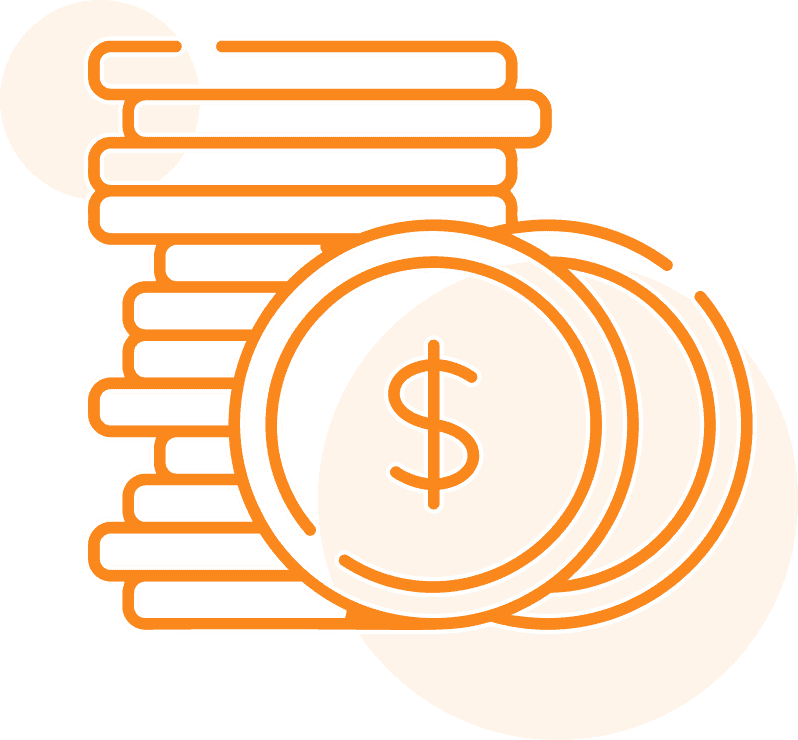
Best 2025 Broker Promo
Up To $2,000 Cash Back + Unlimited Free Trades
Open an account with Qtrade and get the best broker promo in Canada: 5% cash back when you fund a new account + unlimited free trades for the rest of the year.
The offer is time limited - get it by clicking below.
Must deposit/transfer at least $1,000 in assets within 60 days. Applies to new clients who open a new Qtrade account by November 26, 2025. Qtrade promo 2025: CLICK FOR MORE DETAILS.
RRSPs Get a Bad Name
’ve found that in our quest to simplify how we prioritize with different investing accounts, the old standby Registered Retirement Savings Plan (RRSP) has gotten a bad name. In fact, I see lots of misinformation on social media posts these days referring to it as a “rip off” or “scam”.
Ok, I’m going to do my best here to refute this point in a succinct way.
1) First and foremost, if you haven’t started investing yet, the MOST important thing – by far – is to just pick an account and get started. Don’t worry about optimizing and getting everything perfect – just get started. I’ve seen way too many Canadians endlessly read about investing and never actually get started.
2) RRSPs are definitely NOT a scam. It’s very simple math – they’re not a scam, and if you think they are you probably just don’t understand some aspect of the math.
3) If you make below 40K per year, maxing out your TFSA before your RRSP is almost assuredly the better bet.
4) If you make more than 120k or so, then the RRSP probably makes more sense before the TFSA – BUT at that income level, I’d challenge you to try to max out your RRSP and TFSA.
5) For the 40l-120k group (which the vast majority of us fall into) it has become very fashionable to say “just do TFSA first”. I’m not so sure that makes sense. Yes, you will pay tax on RRSP income when you take money out of the RRSP – but remember – you got a refund on the front end, which you should have reinvested right back into the RRSP.
6) People often overestimate what tax bracket they will be in once they retire. There are all kinds of income splitting opportunities for retirees, as well as tax breaks for seniors in Canada. That ultimately results in a substantially lower average tax rate for most couples when they retire than when they were working (which is presumably when you’ll be pulling RRSP cash out).
7) If you’ve read our simple strategies when it comes to withdrawing from your RRSP and TFSA in retirement, then you know that pulling out RRSP money to pay for life between 65 and 71 can allow you to defer your CPP and maybe OAS payments as well. That’s an excellent strategy for people looking to de-risk their retirement income plan (and one Kyle describes in-depth in his course). Many Canadians that follow this strategy are able to take out $200,000+ of their RRSP money at a tax rate of 0%.
8) A lot of people ignore the potential benefits of lowering your taxable income on the front end when saving for retirement. The most notable of these benefits is the Canadian Child Benefit. If you have multiple children, just the increase to the CCB alone is probably going to make it a much better deal for you (because you’ll have lowered your taxable income – thus increasing your CCB). But most people forget all about this when they have to pay a bit of tax on their RRSP withdrawals in retirement – and then complain about “The RRSP Rip Off”.
Starting at 30, Millionaire at 65
Assumptions:
- 30 years old
- 35 years left until retirement
- 4 % return (after inflation)
- 35% marginal tax rate
- Increase savings/year with inflation (assume 2%)
- All RRSP contributions reinvested
Results:
I built a simple spreadsheet that models a steady return and reinvesting the tax refund generated by the RRSP contribution. Based on the assumptions above, for a 30-year-old who wants to have a million dollar RRSP by age 65 would need to save $7,000 per year ($585/month), adjusting for inflation annually. If the 30-year-old makes a higher income and in the 40% tax bracket, s/he will reach millionaire status a year earlier.
| Year | Cash Contribution | Tax Contribution | Refund | Balance | |
| 1 | 2019 | $ 7,000.00 | $ 7,000.00 | $ – | $ 7,280.00 |
| 2 | 2020 | $ 7,140.00 | $ 7,140.00 | $ 2,450.00 | $ 17,544.80 |
| 3 | 2021 | $ 7,282.80 | $ 9,732.80 | $ 2,499.00 | $ 28,419.66 |
| 4 | 2022 | $ 7,428.46 | $ 9,927.46 | $ 3,406.48 | $ 40,824.78 |
| 5 | 2023 | $ 7,577.03 | $ 10,983.51 | $ 3,474.61 | $ 53,951.48 |
| 6 | 2024 | $ 7,728.57 | $ 11,203.18 | $ 3,844.23 | $ 68,145.24 |
| 7 | 2025 | $ 7,883.14 | $ 11,727.36 | $ 3,921.11 | $ 83,147.47 |
| 8 | 2026 | $ 8,040.80 | $ 11,961.91 | $ 4,104.58 | $ 99,104.56 |
| 9 | 2027 | $ 8,201.62 | $ 12,306.19 | $ 4,186.67 | $ 115,952.56 |
| 10 | 2028 | $ 8,365.65 | $ 12,552.32 | $ 4,307.17 | $ 133,770.39 |
| 11 | 2029 | $ 8,532.96 | $ 12,840.13 | $ 4,393.31 | $ 152,564.52 |
| 12 | 2030 | $ 8,703.62 | $ 13,096.93 | $ 4,494.04 | $ 172,392.68 |
| 13 | 2031 | $ 8,877.69 | $ 13,371.74 | $ 4,583.93 | $ 193,288.47 |
| 14 | 2032 | $ 9,055.25 | $ 13,639.17 | $ 4,680.11 | $ 215,304.77 |
| 15 | 2033 | $ 9,236.35 | $ 13,916.46 | $ 4,773.71 | $ 238,487.43 |
| 16 | 2034 | $ 9,421.08 | $ 14,194.79 | $ 4,870.76 | $ 262,890.44 |
| 17 | 2035 | $ 9,609.50 | $ 14,480.26 | $ 4,968.18 | $ 288,566.84 |
| 18 | 2036 | $ 9,801.69 | $ 14,769.87 | $ 5,068.09 | $ 315,574.09 |
| 19 | 2037 | $ 9,997.72 | $ 15,065.81 | $ 5,169.45 | $ 343,970.91 |
| 20 | 2038 | $ 10,197.68 | $ 15,367.13 | $ 5,273.04 | $ 373,819.29 |
| 21 | 2039 | $ 10,401.63 | $ 15,674.67 | $ 5,378.50 | $ 405,183.40 |
| 22 | 2040 | $ 10,609.66 | $ 15,988.16 | $ 5,486.13 | $ 438,130.36 |
| 23 | 2041 | $ 10,821.86 | $ 16,307.99 | $ 5,595.86 | $ 472,730.00 |
| 24 | 2042 | $ 11,038.29 | $ 16,634.15 | $ 5,707.80 | $ 509,055.13 |
| 25 | 2043 | $ 11,259.06 | $ 16,966.86 | $ 5,821.95 | $ 547,181.59 |
| 26 | 2044 | $ 11,484.24 | $ 17,306.19 | $ 5,938.40 | $ 587,188.40 |
| 27 | 2045 | $ 11,713.93 | $ 17,652.33 | $ 6,057.17 | $ 629,157.88 |
| 28 | 2046 | $ 11,948.21 | $ 18,005.37 | $ 6,178.31 | $ 673,175.78 |
| 29 | 2047 | $ 12,187.17 | $ 18,365.48 | $ 6,301.88 | $ 719,331.42 |
| 30 | 2048 | $ 12,430.91 | $ 18,732.79 | $ 6,427.92 | $ 767,717.86 |
| 31 | 2049 | $ 12,679.53 | $ 19,107.45 | $ 6,556.48 | $ 818,432.02 |
| 32 | 2050 | $ 12,933.12 | $ 19,489.60 | $ 6,687.61 | $ 871,574.86 |
| 33 | 2051 | $ 13,191.78 | $ 19,879.39 | $ 6,821.36 | $ 927,251.53 |
| 34 | 2052 | $ 13,455.62 | $ 20,276.98 | $ 6,957.79 | $ 985,571.53 |
| 35 | 2053 | $ 13,724.73 | $ 20,682.52 | $ 7,096.94 | $ 1,046,648.94 |
Starting at 40, Millionaire at 65
Assumptions:
- 40 years old
- 25 years left until retirement
- 4 % return (after inflation)
- 40% marginal tax rate
- Increase savings/year with inflation (assume 2%)
- All RRSP contributions reinvested
Results:
Based on the assumptions above, for a 40-year-old who wants to have a million dollar RRSP by age 65 would need to save $12,000 per year ($1,000/month), increasing with inflation annually.
| Year | Cash Contribution | Tax Contribution | Refund | Balance | |
| 1 | 2019 | $ 12,000.00 | $ 12,000.00 | $ – | $ 12,480.00 |
| 2 | 2020 | $ 12,240.00 | $ 12,240.00 | $ 4,800.00 | $ 30,700.80 |
| 3 | 2021 | $ 12,484.80 | $ 17,284.80 | $ 4,896.00 | $ 50,004.86 |
| 4 | 2022 | $ 12,734.50 | $ 17,630.50 | $ 6,913.92 | $ 72,439.41 |
| 5 | 2023 | $ 12,989.19 | $ 19,903.11 | $ 7,052.20 | $ 96,180.03 |
| 6 | 2024 | $ 13,248.97 | $ 20,301.17 | $ 7,961.24 | $ 122,085.85 |
| 7 | 2025 | $ 13,513.95 | $ 21,475.19 | $ 8,120.47 | $ 149,469.08 |
| 8 | 2026 | $ 13,784.23 | $ 21,904.70 | $ 8,590.08 | $ 178,717.12 |
| 9 | 2027 | $ 14,059.91 | $ 22,649.99 | $ 8,761.88 | $ 209,600.46 |
| 10 | 2028 | $ 14,341.11 | $ 23,102.99 | $ 9,060.00 | $ 242,321.63 |
| 11 | 2029 | $ 14,627.93 | $ 23,687.93 | $ 9,241.20 | $ 276,838.39 |
| 12 | 2030 | $ 14,920.49 | $ 24,161.69 | $ 9,475.17 | $ 313,283.42 |
| 13 | 2031 | $ 15,218.90 | $ 24,694.07 | $ 9,664.67 | $ 351,693.67 |
| 14 | 2032 | $ 15,523.28 | $ 25,187.95 | $ 9,877.63 | $ 392,178.36 |
| 15 | 2033 | $ 15,833.75 | $ 25,711.37 | $ 10,075.18 | $ 434,810.78 |
| 16 | 2034 | $ 16,150.42 | $ 26,225.60 | $ 10,284.55 | $ 479,695.58 |
| 17 | 2035 | $ 16,473.43 | $ 26,757.98 | $ 10,490.24 | $ 526,925.62 |
| 18 | 2036 | $ 16,802.90 | $ 27,293.14 | $ 10,703.19 | $ 576,608.98 |
| 19 | 2037 | $ 17,138.95 | $ 27,842.15 | $ 10,917.26 | $ 628,851.80 |
| 20 | 2038 | $ 17,481.73 | $ 28,398.99 | $ 11,136.86 | $ 683,769.20 |
| 21 | 2039 | $ 17,831.37 | $ 28,968.23 | $ 11,359.60 | $ 741,478.58 |
| 22 | 2040 | $ 18,188.00 | $ 29,547.59 | $ 11,587.29 | $ 802,104.02 |
| 23 | 2041 | $ 18,551.76 | $ 30,139.05 | $ 11,819.04 | $ 865,773.80 |
| 24 | 2042 | $ 18,922.79 | $ 30,741.83 | $ 12,055.62 | $ 932,622.30 |
| 25 | 2043 | $ 19,301.25 | $ 31,356.87 | $ 12,296.73 | $ 1,002,789.09 |
Starting at 50, Millionaire at 65
Assumptions:
- 50 years old
- 15 years left until retirement
- 4 % return (after inflation)
- 40% marginal tax rate
- Increase savings/year with inflation (assume 2%)
- All RRSP contributions reinvested
Results:
There is less time until retirement for a 50 year old which results in less compounding over time. Never the less, strong earnings combined with high savings can still result in a wealthy retirement. Based on the assumptions above, for a 50-year-old who wants to have a million dollar RRSP by age 65 would need to save $28,000 per year ($2,333/month), increasing with inflation annually.
You may notice that $28k is above the RRSP contribution limits but can be mitigated in a couple of ways. Chances are if you are starting your RRSP at 50, you have a ton of unused contribution space. If that gets used up, and you have a spouse, consider the $28,000/year a team effort split between two RRSP accounts.
| Year | Cash Contribution | Tax Contribution | Refund | Balance | |
| 1 | 2019 | $ 28,000.00 | $ 28,000.00 | $ – | $ 29,120.00 |
| 2 | 2020 | $ 28,560.00 | $ 28,560.00 | $ 11,200.00 | $ 71,635.20 |
| 3 | 2021 | $ 29,131.20 | $ 40,331.20 | $ 11,424.00 | $ 116,678.02 |
| 4 | 2022 | $ 29,713.82 | $ 41,137.82 | $ 16,132.48 | $ 169,025.29 |
| 5 | 2023 | $ 30,308.10 | $ 46,440.58 | $ 16,455.13 | $ 224,420.06 |
| 6 | 2024 | $ 30,914.26 | $ 47,369.39 | $ 18,576.23 | $ 284,866.98 |
| 7 | 2025 | $ 31,532.55 | $ 50,108.78 | $ 18,947.76 | $ 348,761.18 |
| 8 | 2026 | $ 32,163.20 | $ 51,110.96 | $ 20,043.51 | $ 417,006.60 |
| 9 | 2027 | $ 32,806.46 | $ 52,849.97 | $ 20,444.38 | $ 489,067.75 |
| 10 | 2028 | $ 33,462.59 | $ 53,906.97 | $ 21,139.99 | $ 565,417.14 |
| 11 | 2029 | $ 34,131.84 | $ 55,271.83 | $ 21,562.79 | $ 645,956.25 |
| 12 | 2030 | $ 34,814.48 | $ 56,377.27 | $ 22,108.73 | $ 730,994.64 |
| 13 | 2031 | $ 35,510.77 | $ 57,619.50 | $ 22,550.91 | $ 820,618.57 |
| 14 | 2032 | $ 36,220.99 | $ 58,771.89 | $ 23,047.80 | $ 915,082.85 |
| 15 | 2033 | $ 36,945.41 | $ 59,993.21 | $ 23,508.76 | $ 1,014,558.49 |
How to Build a Million Dollar RRSP
Becoming an RRSP millionaire is not out of reach for middle-class income people who start young and are willing to live frugally. Alternatively, obviously the more you earn the less frugal you have to be in order to meet the following savings targets:
- Starting at 30, with conservative assumptions, saving $585/month (increasing with inflation annually) and reinvesting the RRSP tax refund will result in a $1 million portfolio in 35 years.
- Starting at 40, with conservative assumptions, saving $1,000/month (increasing with inflation annually) and reinvesting the RRSP tax refund will result in a $1 million portfolio in 25 years.
- Starting at 50, with conservative assumptions, saving $2,333/month (increasing with inflation annually) and reinvesting the RRSP tax refund will result in a $1 million portfolio in 15 years.
You can see the massive difference in per-month savings it takes to make up for not getting started on building your retirement until relatively late in the game. Of course, if you’re able to start in your 20s, that’s even better. Warren Buffett is reported to have bought his first stock at the age of 11, and regrets not starting sooner!
While we just talked about the levels of savings required to get a million dollar RRSP (based on conservative assumptions) we didn’t really get into the “how“. Oftentimes, investors can be their worst enemy, buying high and selling low.
Check out my always updated guide to the Best ETFs in Canada, as well as my current pick for the best online brokerage in Canada for more information on how to build your million dollar RRSP.

Best 2025 Broker Promo
Up To $2,000 Cash Back + Unlimited Free Trades
Open an account with Qtrade and get the best broker promo in Canada: 5% cash back when you fund a new account + unlimited free trades for the rest of the year.
The offer is time limited - get it by clicking below.
Must deposit/transfer at least $1,000 in assets within 60 days. Applies to new clients who open a new Qtrade account by November 26, 2025. Qtrade promo 2025: CLICK FOR MORE DETAILS.
I've Completed My Million Dollar Journey. Let Me Guide You Through Yours!
Sign up below to get a copy of our free eBook: Can I Retire Yet?


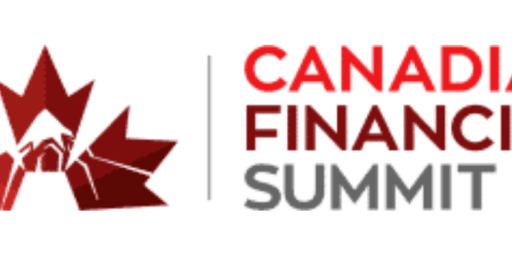

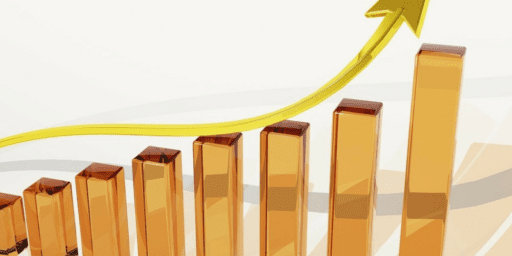
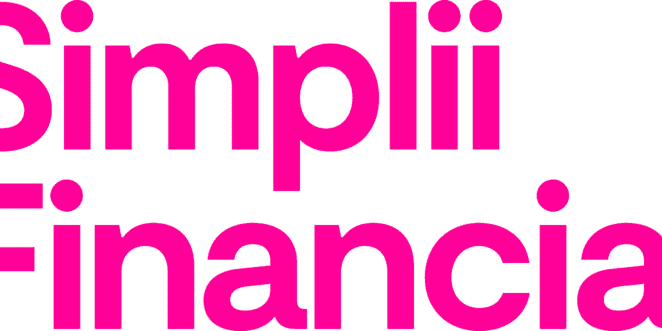

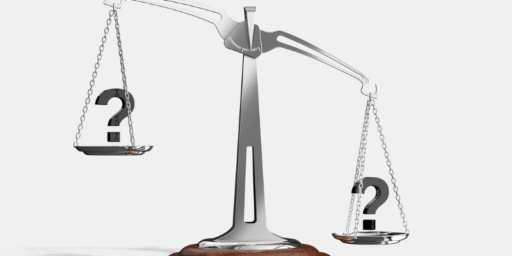
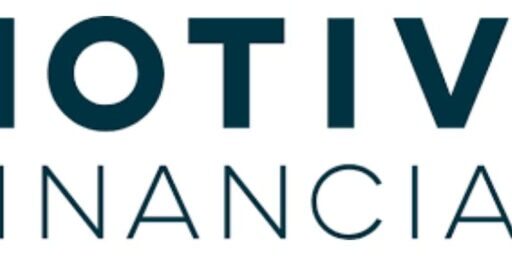


It’s one big personal big jigsaw puzzle…. is it not?
Just a small quibble…
You indicate that the contributions are made monthly but when you calculate the first year investment return it is on the full contribution amount for that year…same with proceeding years. This makes a difference in the total amounts since the returns would not be on the full contribution amount for that year but only a portion of that amount. Obviously you generally benefit more the sooner you ‘get your money in the market’ which will make a difference.
Ex: 7000 * 4% = $280
Assuming ‘smooth’ market returns you would not be receiving 4% on the full $280 but only on a small amount at first and ONLY in month 12 will you get it on the full $7000 amount at 1/12 of 4% – I think the actual balance after year one would be around $7,171. This will affect you grand total amount when you hit 65.
Also: This is the assumption that your returns are ‘even’ which they usually are not from that which may also affect your totals (CAGR). I think it still shows the dramatic affect of having your money in early to allow for compounding.
40% rate of return is a hefty yearly salary. Tough to do.
We were late starters in the investment world, almost 50. That was a time when “Growing the size of the pile” was our investment objective, but as with most we were floundering, playing the market, buying and selling, looking for new stocks and even owning Mutuals.
Thankfully, we found The Connolly Report and switched to “Growing our income”. Our goal was to generate more income than we needed in retirement, then later to having the income exceed $100k, and now we just enjoy the continuing growth. We hardly ever look at our net worth or the value of our holdings and really don’t care whether the figure is up, down or the same. Why would we?
Congrats on your financial success Henry. Are you open to sharing some of your top positions?
I’ve posted that I now only own 12 Cdn stocks, though several of the same stocks in different accounts. 5 Banks, 2 utilities, 2 communications and 3 pipelines, so it would not be too difficult to pick most of them out. I don’t list them as I don’t want people to assume they should buy them. I rather they do their own research and pick stocks they like, not ones I own.
Of course $1,000,000 in 2054 will be worth less than $1,000,000 in 2044, which will be worth less than $1,000,000 in 2034. So in fact the 30 year old and 40 year will need to invest a bit more in order to have the same buying power at retirement as the 50 year old.
Thanks for this article! But retirement for anyone born after 1959 is now aged 67, no?
no, that didn’t go through
Wife and I have done pretty well with our RSPs. As of this morning I have $650k and she is at $578k. Ages 49/47. We also have $180k combined in our TFSAs and $500k combined non registered. And too much in real estate but that’s another story.
Will we have taxable income in retirement that reduces OAS? Yes for sure but honestly I couldn’t care less and in fact view it as a sign of success. Will likely add seven figures to non registered before I retire and expect total portfolio well over $5m by that time. Wife retired a few years ago.
No rocket science for us, just maxed RSPs every year since mid 20s and always make our TFSA contributions on January 1st along with RESP contributions.
Hello FT,
I have been a regular follower of your journey and teachings since many years. Many congratulations on your journey.
I was just wondering on a retirement portfolio – If we invest in a foreign account ( like India – where most of public banks will give 6 – 8 % fixed interest on your portfolio) . Is that a good option ? I am a Canadian citizen with an active bank accounts in India. What will be pros and cons of this investment approach. Your feedback will be much appreciated. Thank You
I will need to dig into this a little further. However, I would assume that any foreign interest would be taxed like salary in Canada – similar to if you owned a US bond in a non-registered account. The ideal case would be to have that foreign account in a tax-sheltered account, but I do not believe this is possible.
Nice article! @Dave his returns assumption is inflation adjusted.
FT did the calculation with the annual contribution inflation adjusted and the returns inflation adjusted
But the end number is an arbitrary $1,000,000.
The issue is that 1 million today, has significantly different purchasing power than 1 million in 10/20/30 years from now
Never mind I think I am only partially understanding this
FT is accounting for the inflation by using a 4% return on investment, when the actual return might be 6% with 2% inflation
I think what threw me off is he stated the annual contribution would increase by 2% and then actually used those numbers in the table.
Perhaps I just don’t understand it properly, but by using an ever increasing annual contribution don’t you have to inflation adjust your 1million goal as well?
Hi Dave, yes, I reduced the return to 4% to account for 2% inflation. In the model that I chose, savings should increase annually, I chose the amount to arbitrarily be inflation.
Good article, shows the power of saving early even small amounts. One thing to consider is the effect of inflation on your final savings though
For example, 1 million dollars today is equivalent to 2 million dollars in 35 years assuming 2% inflation. So if you want the purchasing power of a million of today’s dollars, that 30 yr old will need to save twice as much